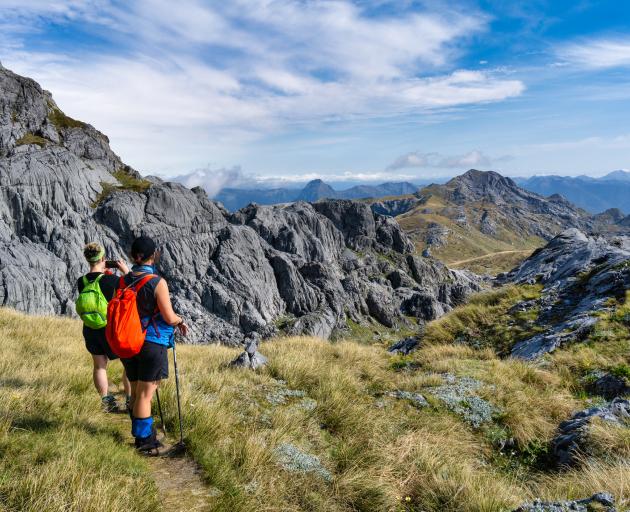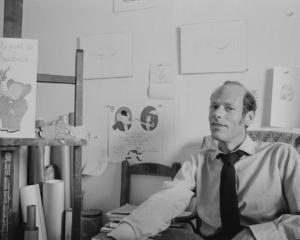
Ray Salisbury
Potton & Burton

Salisbury can claim a long connection with the place, as his great-great-uncle Thomas Salisbury was the first Pakeha to go there.
The Arthur Range dominates Nelson’s western skyline and it is this which guards the Tableland from prying eyes. For today’s traveller, the easiest access is by road from the Motueka Valley to Flora Saddle, at 1000m, followed by an easy and pleasant three-to-four-hour stroll on good tracks through the headwaters of the Takaka River, skirting Mt Arthur. But in the 19th century, seeking new and better places to graze sheep or mine gold, it was an arduous undertaking.
Salisbury gives an account of the history of the Tableland and surrounding valleys which is both thorough and personal.
As you read, you know that he has stood at the places he describes. He covers exploitation – mining, grazing and hydro-electricity – before moving on to recreation – tramping, hunting and caving.
Enthusiasts for back-country huts will enjoy the chapter devoted to them, while the chapter on search and rescue has tales both heroic and tragic.
The many characters who have called the area home, both historical and more recent, are brought to life. Many of these were New Zealand Forest Service or Department of Conservation rangers, notably one Max Polglaze, whose name is inextricably linked to the huts, tracks and rock shelters in the area. The reclusive Henry and Annie Chaffey, who lived for 37 years in a remote cottage at their asbestos mine in the Takaka Valley get a chapter of their own.
The chapter on caves makes compelling reading. The Arthur Range and the Tableland are built on a 1.5km thick block of limestone and are home to New Zealand’s longest and deepest caves. The bulk of the exploration of these has occurred in the last 40 years, and it is this freshness of genuine exploration of places never visited by anyone that makes for a good read.
If I had one wish for this book, it would be that the natural history was covered in greater depth. Kahurangi National Park is our second largest and most biodiverse park, so there is plenty that could be covered. But I accept that it is impossible for an author to include everything of interest, and a decision to focus on human history is understandable.
Contemporary photos are mostly by the author, many presented as full or double pages. Notable among the contributed photographs is the work of Neil Silverwood, arguably New Zealand’s best caving photographer. A wide range of historical images is also included, as is a good selection of maps. Production and presentation is of the standard that back-country aficionados have come to expect from the Potton and Burton stable.
People who know the Tableland will appreciate this book. People who do not may well find themselves drawn there.
- David Barnes is a tramper and armchair mountaineer.











